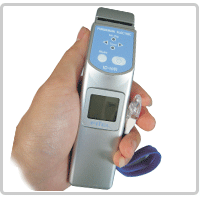As the demand for faster and more
dependable communication networks grows, the optical fibre business is rapidly
evolving to provide high-performance data transfer. The most significant
developments in recent years have been the latest automated tapering
technologies, notably the FBT Fiber Taper Machine and the Fibre Fuse Biconic Taper Machine. These specialised
systems are changing the way fibre components are developed and manufactured,
particularly for telecommunications, sensing applications, and advanced
photonics research.
Traditional fibre tapering
entails manually heating and stretching fibres to create thinner sections for
coupling or changing signal characteristics. While effective, it allows for
human error, irregular geometry, and low reproducibility. Today's automated
machines eliminate these obstacles with precision-controlled procedures and
intelligent feedback systems, making fibre manufacture smarter and more
efficient than ever before.
The FBT Fibre Taper Machine is
designed to produce fused biconic taper (FBT) couplers, which are critical
components in signal splitting, wavelength division multiplexing, and power
control. These machines guarantee perfect alignment, precise tension
management, and high-quality fusion, resulting in minimal insertion loss and
dependable optical performance. They also enable customisation for various fibre
kinds and coupling arrangements, providing flexibility for specialised network
requirements.
On the other side, the Fiber Fuse Biconic Taper Machine combines
sophisticated fibre fuse protection and tapering technology. Fibre fuse is a
damaging phenomenon in which high-power light causes overheating and ongoing
destruction in the fibre core. Using advanced monitoring systems, this machine
actively prevents such errors during manufacturing, preserving both the
equipment and the fibre. The end result is a safer manufacturing environment
and a higher yield of defect-free components.
Both techniques help to advance
the development of next-generation optical devices such high-precision
couplers, splitters, sensors, and fiber-based amplifiers. Their ability to maintain
regular tapers and consistent mechanical qualities improves signal integrity,
making them indispensable tools in 5G networks, data centres, and
fiber-to-the-home (FTTH) applications.
As automation continues to determine the future of fibre manufacturing, tapering technologies will play an important role in enabling global digital connectivity. With machines like the FBT Fiber Taper Machine and Fibre Fuse Biconic Taper Machine leading the way, the optical communications sector is well-positioned to fulfil the world's growing demand for faster, more stable, and efficient networks.
Follow our Facebook and Twitter for more information about our product.

















